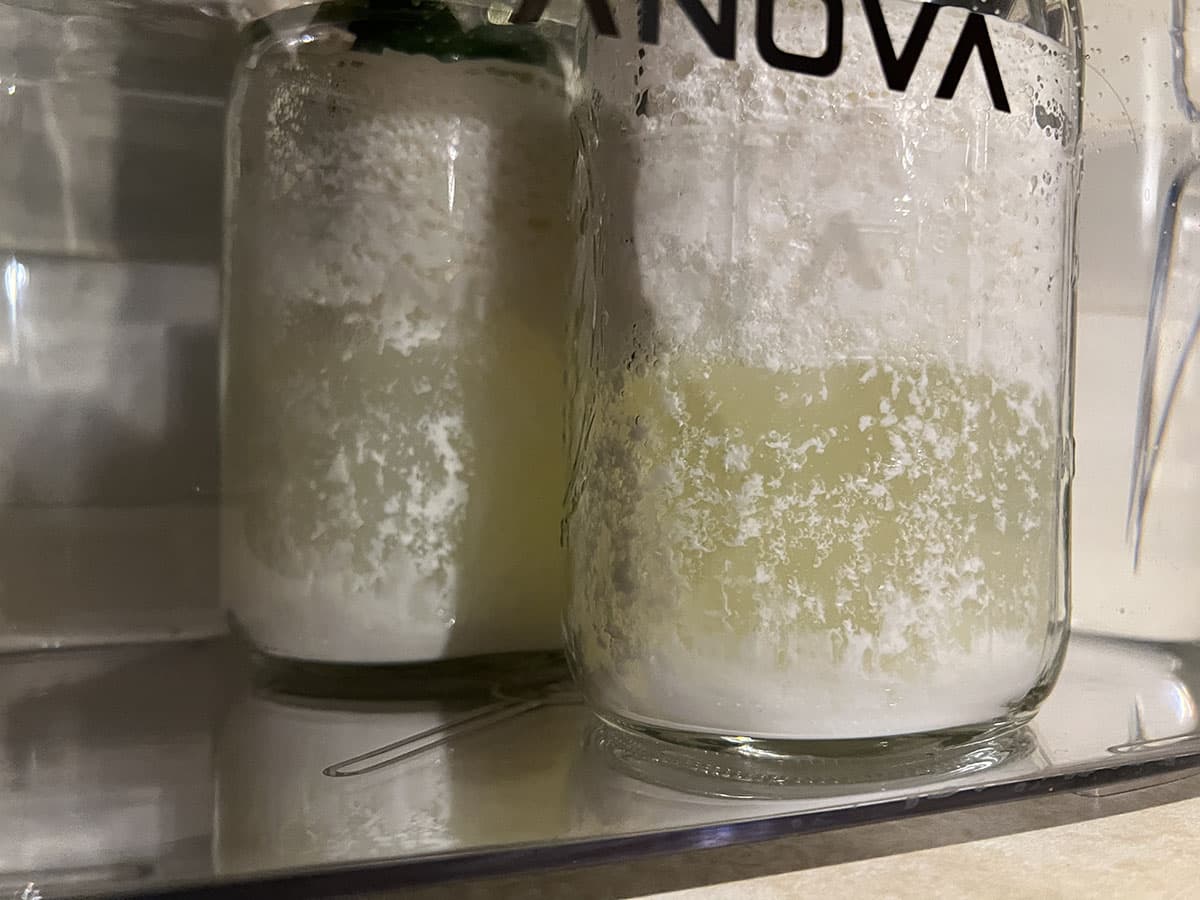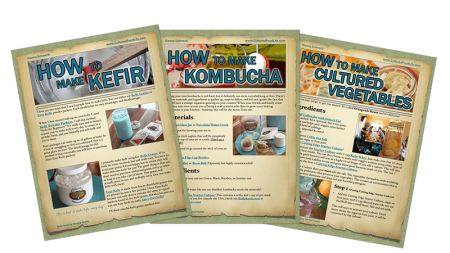
Is Your L. Reuteri Yogurt Separating?
L. Reuteri the super strong microbe
L. Reuteri Yogurt
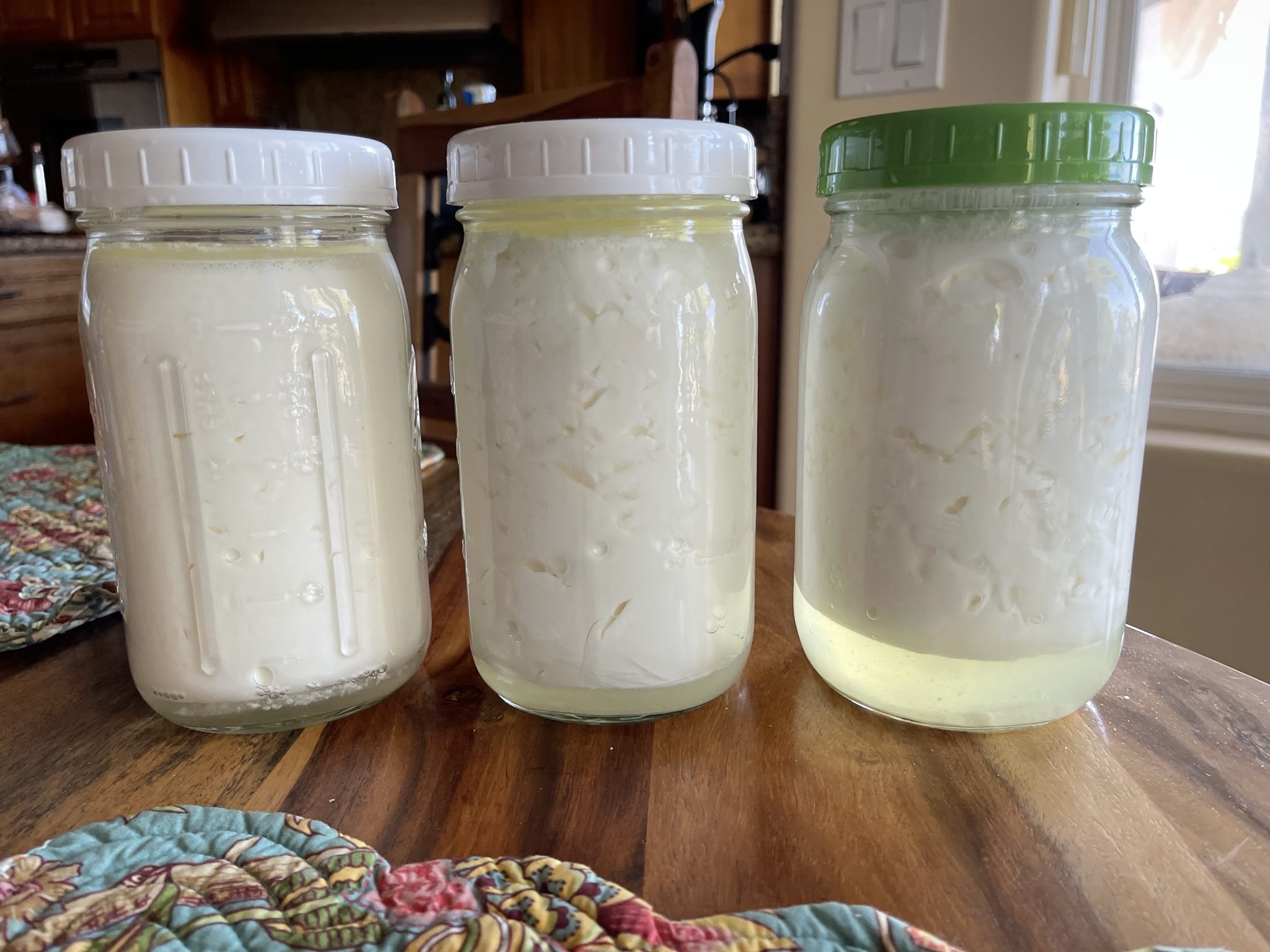 I have always said that L. reuteri has a mind of its own. It's a very strong strain of bacteria, and they even use this bacteria to clean out fermentation vats that have other undesirable bacteria. Many yogurt manufacturers felt L. reuteri couldn't be made into yogurt. But that is no longer the case. More and more people are making this powerful yogurt with many health benefits; however, sometimes it can act up and separate into whey and curds and smell and taste really strong. After working with this yogurt for a few years, I know much more about it and can help you.
I have always said that L. reuteri has a mind of its own. It's a very strong strain of bacteria, and they even use this bacteria to clean out fermentation vats that have other undesirable bacteria. Many yogurt manufacturers felt L. reuteri couldn't be made into yogurt. But that is no longer the case. More and more people are making this powerful yogurt with many health benefits; however, sometimes it can act up and separate into whey and curds and smell and taste really strong. After working with this yogurt for a few years, I know much more about it and can help you.
Yogurt — The First Batch
The first batch with a new sachet can often separate into whey and curds, sometimes majorly. This is because the bacteria are not fully awake yet and not as stable as when you make your subsequent batches using some of the finished yogurt as a starter culture (two tablespoons per quart). It can also smell really strong and sometimes have a cheesy flavor, but all of this will calm down on the second batch when using the yogurt as a starter.
When using this yogurt as a starter for your next batch, it should be a great-looking and tasting yogurt. Use two tablespoons of this yogurt as a starter for your next batch, and two tablespoons of Prebio Plus to ensure the microbes have enough food during the 36-hour-long fermentation. Don't be tempted to shorten the fermentation time. The L. reuteri doesn't even begin to grow until the 30th hour of fermentation. This will ensure you get lots of CFUs (Colony Forming Units) of L. reuteri.
L. reuteri likes body temperature so it can help to turn your yogurt maker down to 98°-97°F degrees if your yogurt is separating and decrease the Prebio Plus or Inulin.
Ultra Pasteurized Milk
Always use ultra-pasteurized milk when making any kind of yogurt. It helps to denature the lactoglobulin, which helps to form a thick curd. You do not need to heat the milk if it is ultra-pasteurized. You can use it cold from the fridge. If it is not ultra-pasteurized, then heat the milk to 195ºF / 90ºC and hold it there for 10 minutes to denature most of the lactoglobulin. Let it cool down to 100°F / 38°C and then add the culture.
Check out L. reuteri FAQs Click here
The Second and Third Batches
If the subsequent batches are separating, this usually means the yogurt is getting overactive and needs less food. Here are some things you can do. Only use one tablespoon of Prebio Plus instead of two tablespoons, or leave it out altogether. If it keeps happening on each batch using the yogurt as a starter, then try using a new sachet. You can also reduce the temperature to 97°F-99°F / 36°C-37°C.
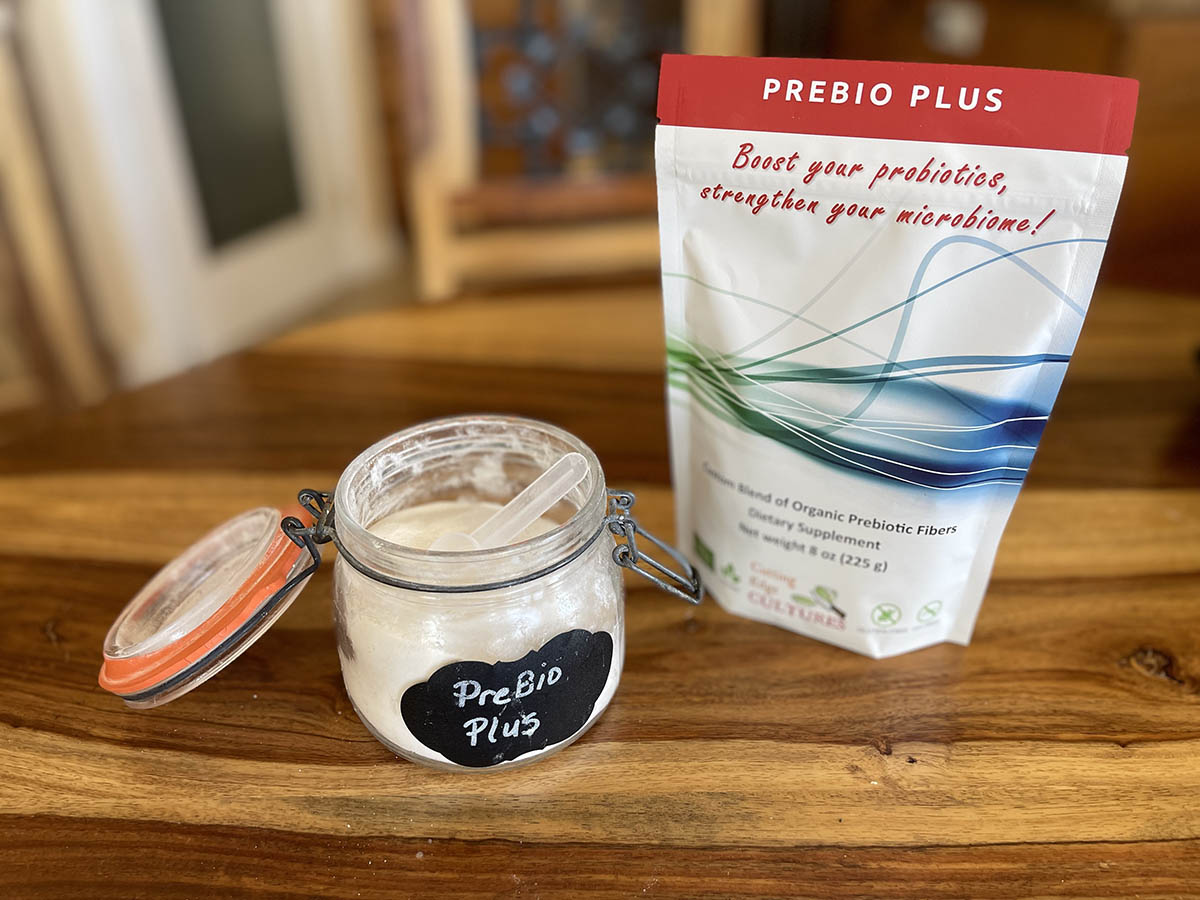
When L. Reuteri Yogurt is Overly Sour
A few things to also try for your next batch that we think could help:
- Only use one tablespoon of Prebio Plus instead of two or leave it out altogether until it stops getting sour tasting. I suspect it is just super strong and that's why it's extra sour and separating.
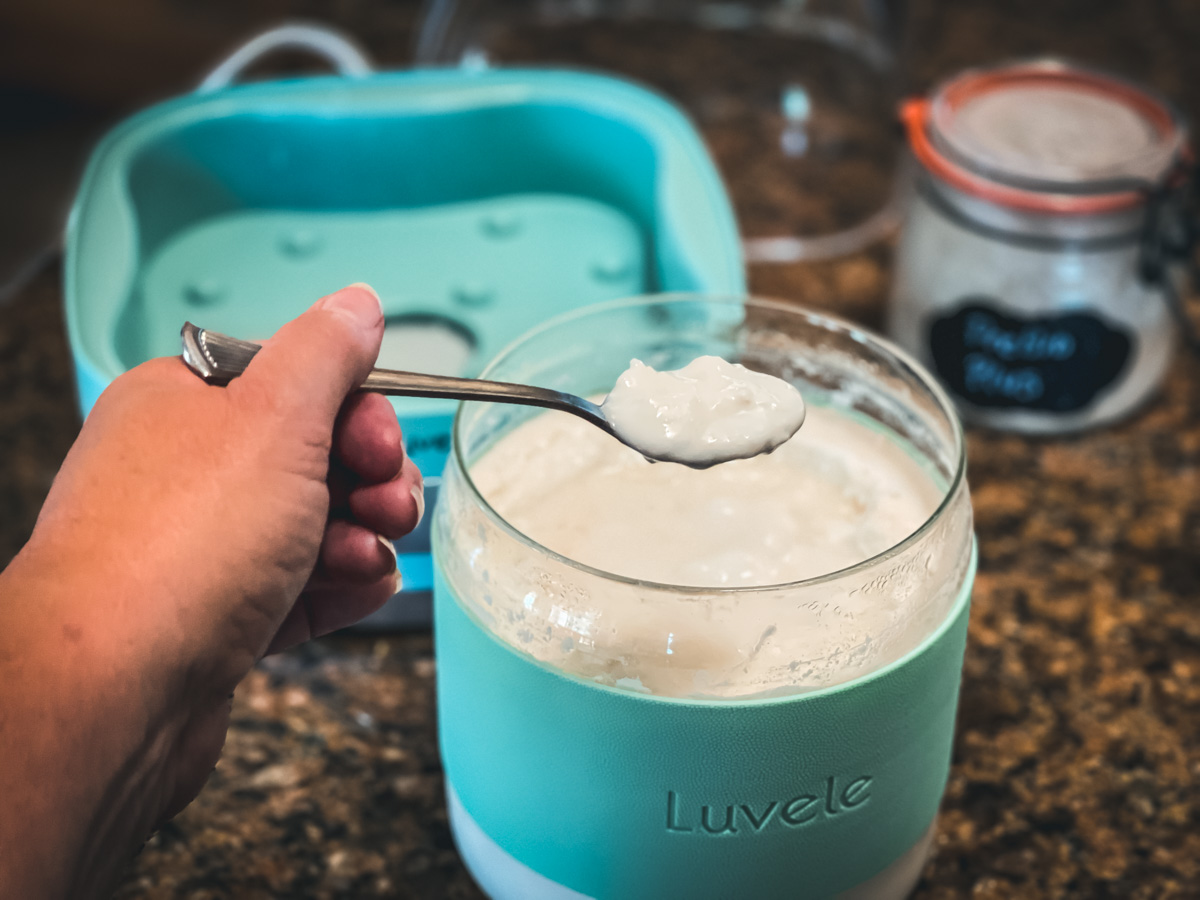
What to Do With an Overly Separated Batch
My favorite thing to do with an overly separated batch is to use it as a starter for the next batch of L. reuteri yogurt and to make L. reuteri cottage cheese. Even if it smells and tastes strong, once you make it into cottage cheese, it will taste really good. You can also use it in a smoothie with fruit, giving it a better flavor.
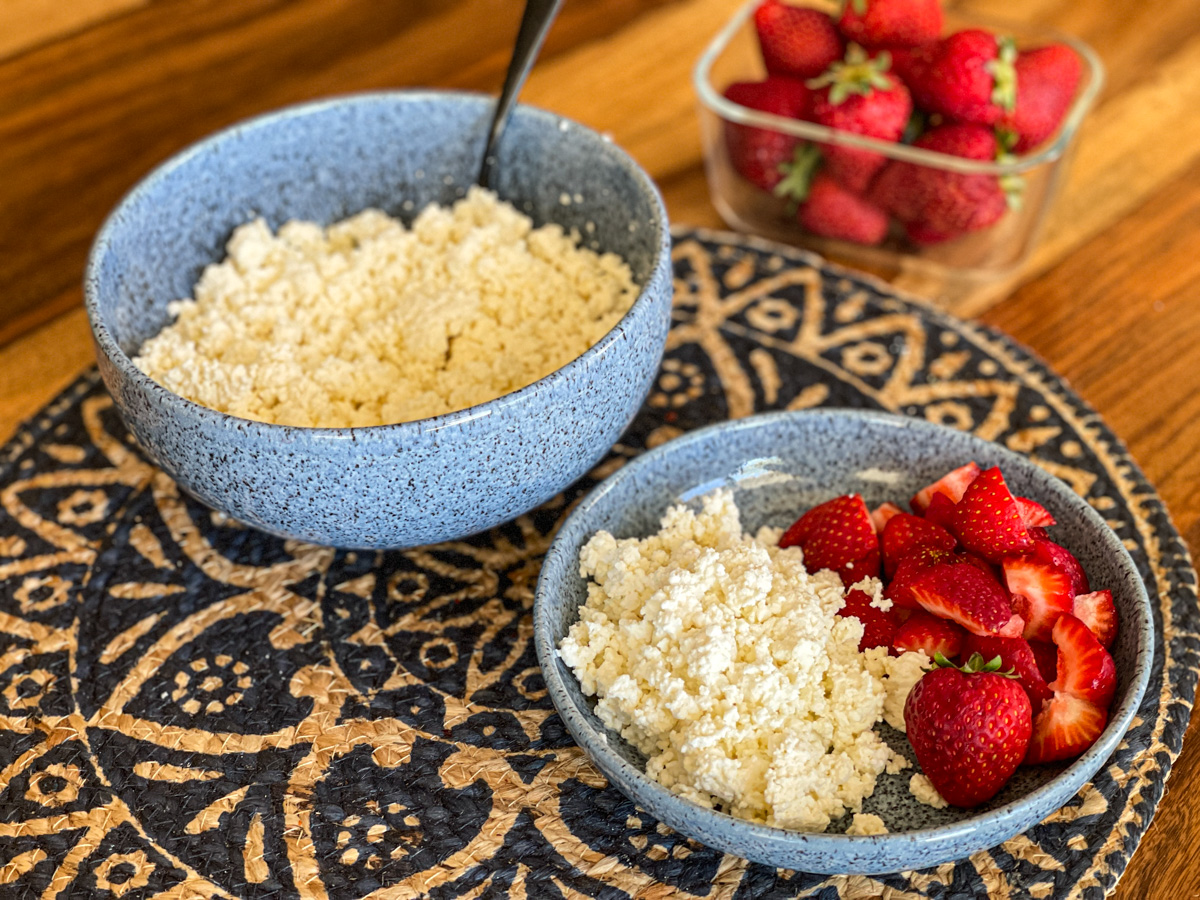
Non-Dairy L. Reuteri Yogurt
Non-dairy L. reuteri yogurt can also separate since non-dairy milks are made with water. We add guar gum, a prebiotic, to thicken the yogurt. The first-activation batch has a tendency to smell really strong and even has a little harmless pink yeast on the top. You can scrape this off, and the underneath yogurt will be fine. This can occur from air exposure. The subsequent batches using this as a starter will usually result in really good-tasting yogurt.
If you would like to see our non-dairy L. reuteri yogurt recipes, click the link.
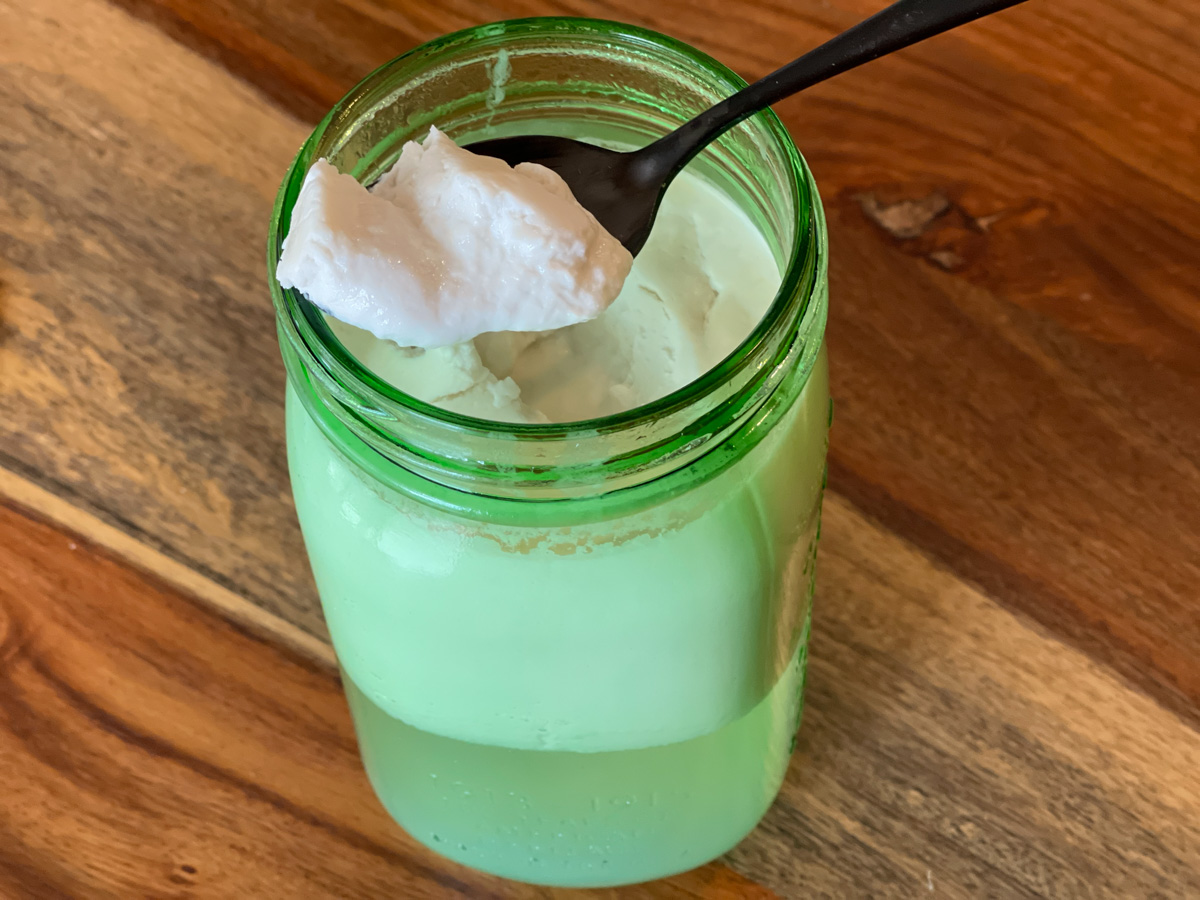
separation is Not Failure
One thing that's important to know is that separation is not a sign of failure. A half-cup of dairy L. Reuteri Superfood Yogurt made with Cutting Edge Cultures' L. Reuteri Superfood Yogurt Starter contains over 67.2 Billion live bacteria. (See our research here on our FAQ page.) That's far more than any L. reuteri supplement that we know of currently on the market. (For comparison: the highest supplement has a count of only 5 Billion per capsule). It's also far higher than any store-bought or homemade yogurts, which are typically cultured for only 4-8 hours undergoing only one or two multiplication cycles, whereas L. reuteri yogurt undergoes 12!
Commercial yogurts also tend to separate during production. They look so smooth and uniform when you open the tub because they have added a "stabilizer" additive. We do not add any additives to our L. reuteri starter culture.
Whether separated or not, your fermented superfood contains L. reuteri in both the curds (solids) and the whey (liquid). The whey is good to drink and is healthy. It has a lot of protein, calcium, vitamin D, and high levels of B vitamins. Despite the similarity to yogurt, L. reuteri is not yogurt. So, we don't expect L. reuteri to behave like yogurt when, in fact, it is not yogurt. L. reuteri is a cultured dairy superfood that can take different forms (yogurt-like is one of them): some thinner, some thicker, depending on the milk(s) you use.
Listen To My Podcast
L. reuteri yogurt has a mind of its own and can get super strong when you are activating it. You get 67 billion CFUs of L. reuteri in a 1/2 cup serving, so I can help you understand what is happening if your yogurt separates into whey and curds. Tune in to learn more.
Are you on the list?
Sign up today and I'll send you my free Getting Started Guide!
Each week I'll send you updates, tips, recipes, and more! You might even be a winner of my weekly giveaway! (starter cultures, memberships, and more!)
Come be a part of my cultured food family!

